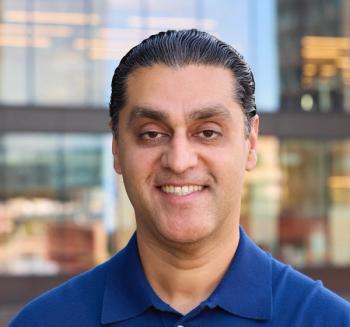
Rimidi CEO looks at the future of remote patient monitoring
Lucienne Ide talks about the company’s expansion into monitoring kidney disease, working with primary care doctors and why she expects more health systems to embrace remote monitoring.
More healthcare providers have embraced
“I think it is going to accelerate,” Rimidi tells Chief Healthcare Executive®.
Ide points out that remote patient monitoring is being used extensively by a relatively narrow group of providers, but she expects to see broader adoption as more health systems and larger practices aim to keep people healthy.
“I think as we see practices and larger health systems really adopt it as part of the way they deliver care, we're going to see pretty exponential growth in the number of patients who are served,” she says.
In a recent interview with Chief Healthcare Executive®, Ide talks about her company, the market and ways remote patient monitoring can improve patient care. (See part of our conversation in this video. The story continues below.)
Tracking diseases and pregnant patients
Rimidi, based in Atlanta, has worked with providers to track chronic conditions such as heart disease and diabetes.
In 2023, the company launched a new module to help providers monitor patients with chronic kidney disease. An estimated 37 million adults in the U.S. are living with chronic kidney disease, according to the
“There's a lot of comorbidity between diabetes and hypertension, as well as heart failure, and chronic kidney disease,” Ide says. “So it's a disease that we have always touched, but felt like it was worth really dedicating some more in depth support for providers.”
Rimidi has partnered with Boston Medical Center
Christina Yarrington, director of labor and delivery at Boston Medical Center, told Chief Healthcare Executive in a September 2022 interview that the program has helped women get care before developing more serious complications.
The project has expanded to help monitor women throughout their pregnancy, Ide says.
“We're able to impact women across socio-economic, racial, ethnic parameters, and equally engage them, as well as identifying women who weren't being picked up through traditional care early,” Ide says.
Remote patient monitoring has potential to help improve maternal care, Ide says. In Georgia, where Rimidi is based, many rural counties don’t offer obstetric services.
“I think we will see more programs, recognizing that ongoing screening and monitoring is a perfect use case for remote patient monitoring technologies, everything from blood pressure to diabetes, for women who have that complication of pregnancy,” Ide says.
‘It’s here to stay’
Ide sees more large health systems moving from pilot programs in remote patient monitoring over the past couple of years to launching an “enterprise approach.” More organizations are seeing the value of remote patient monitoring, she says.
“I think everybody realizes it's here to stay,” Ide says.
More doctors are using remote patient monitoring.
Remote patient monitoring can help medical groups and physicians build more lasting relationships with patients, especially as primary care groups face increasing competition, Ide says.
“It is a way to build loyalty with the practice,” Ide says. “And a lot of these practices are under some pressure from innovative healthcare models, patients receiving care through virtual clinic models, through their local pharmacy, through concierge practices. So I do think practices are realizing those competitive and innovative pressures in the market. And a lot of times those offerings focus on convenience of care delivery. And so it's a good way to help, maybe traditional healthcare delivery, move towards that model of engagement and convenience.”
Ide also stresses the value of using remote monitoring technology to foster deeper relationships. Practices and health systems can send a quick note to encourage patients who are regularly tracking their blood pressure or glucose. Conversely, they can also reach out to a patient who hasn’t checked their blood pressure in a few days.
“We talk a lot with practices, when they start, about sort of the importance of building that relationship and the trust in the program,” Ide says.
With the Centers for Medicare & Medicaid Services expanding reimbursements of remote patient monitoring, Ide says providers are getting more incentive to utilize it in their operations.
“It’s sort of stepping stones towards value-based care and helping bridge what was a hard gap to cross … if you're a traditionally fee-for-service practice, and then trying to move into value-based contracting,” she says.






























































































